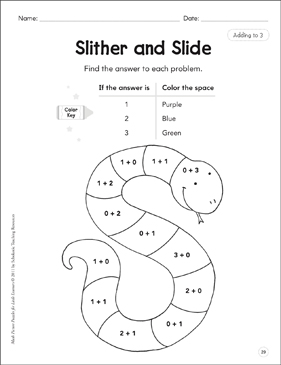
It is crucial that you know what amount of financial aid you are eligible to receive. Although there are many factors that influence the amount of financial help you receive, there is a set of rules that all recipients must follow. These include fulfilling general eligibility requirements as well as Satisfactory Academic Progress standards. To be eligible for federal funding, you will also need to submit a FAFSA year after year.
Calculating your financial aid package
Planning for college requires you to calculate your financial support package. There are many benefits to receiving financial aid, but it's important to know which programs are most suitable for you. Financial aid award letters explain how much you could expect to receive. These include federal loans, as well other funding options. You will also find information about your repayment options in the awards.
The first step is to calculate the expected contribution of each member of your family towards the overall cost. The Princeton net price calculator can be used to calculate your family's obligations. The calculator assumes your family lives in Canada and the United States. It's not meant to be used for students of other countries. You should also understand that the calculator results are not guarantees of aid awards. It is only a guideline, based upon Princeton's aid practices. The aid office decides the actual award.

FAFSA Application Form
FAFSA is the first step toward financial aid. Most grant programs require it. This is the first step in applying for student loans. FAFSA is available online and via mobile apps. FAFSA does not have fees and can help you get the funds you need for college.
Gathering documents and information to help you determine your financial ability to afford college is necessary to complete the FAFSA. Also, be sure to have your date of birth and social security number ready. Once you have all your information, you can choose the form that corresponds to the school year you are attending. You can find the deadlines for different time periods by visiting the FAFSA website. If you want to attend school for different periods of time, for example, fill out the FAFSA first form, and then the second one.
Understanding the formula
It is important to remember that the financial aid formula does not take into account your income. The formula takes your Expected Family Contribution and subtracts it from the cost for attending COA. You will be eligible for more financial aid if your EFC is higher.
The EFC is the maximum amount your family can pay to go to college. It is calculated using a chart such as the one shown above. This is what colleges assume you are able to afford to pay college. Your COA (cost of actual attendance) is the total amount you'll need to pay out-of-pocket after financial aid has been deducted.

Tax-sheltering strategies that reduce eligibility for financial aid
To avoid being denied for financial assistance, you can set up a contingency plan in the child's name. To be prepared in case of unforeseeable circumstances, you should create a fund that has at least six monthly salary. The amount of the fund should, in general, be divided among all family members attending college.
It is possible to invest in savings bonds or regular taxable accounts. These accounts will not have a greater impact on your child’s eligibility than UGMA/UTGA custody accounts. However, the award year will determine the value of assets.
FAQ
What is the difference between a college and a university
A university is an academic institution providing higher education. It offers postgraduate and undergraduate courses in a variety of fields.
A college is typically smaller and less well-known than a university. While it might offer fewer courses than a university, it often has its own specialist department.
What is homeschooling?
Homeschooling refers to a way in which children are taught at home by their parents. It is also known by the names private education or self-education.
Families who wish to homeschool their children are well served by this option. This allows them access to a quality education while staying at home.
Children are educated by their parents from the time they are born until they reach high school. They decide which subjects they will study and how long each one should be. The student learns everything on his/her own time.
Parents decide when to begin teaching their children. Many schools recommend that children enroll in classes between the ages four and twelve. Some families wait until their children reach kindergarten to start teaching them.
There are many resources parents can use to help them navigate the curriculum. The lessons can be learned from videos, books and magazines as well as websites.
Many families find homeschooling a great fit for their busy schedules. Parents can spend more time with their children than in traditional public schools.
What are the differences between early childhood education?
There are many different ways to describe early childhood education. Some of the most popular ones are:
-
Preschool - Children ages 2 to 5
-
PreKindergarten- Children from 4-6 years of age
-
Head Start/ Headstart - Children ages 0 to 3
-
Day Care/Daycares - Children from 0-5 Years
-
Child Care Centers: Children from 0-18
-
Family Child Care for Children Ages 0-12
-
Homeschooling – Children from KG up to 16
What is a vocational college?
Vocational schools provide programs that prepare people for a specific job. These schools may offer general education and training in the skills required by employers.
Vocational education has a significant role to play in society. It helps young people gain the skills they need to succeed. It ensures that all students have access to high-quality learning opportunities.
A vocational school offers its students a range of options, including apprenticeships, certificates, diplomas, degrees, college transfer programs, and other postsecondary credentials. Vocational school students learn both academic subjects and more practical subjects like math, science, English or social studies.
Statistics
- Among STEM majors, that number is 83.5 percent. (bostonreview.net)
- Data from the Department of Education reveal that, among 2008 college graduates, 92.8 percent of humanities majors have voted at least once since finishing school. (bostonreview.net)
- They are more likely to graduate high school (25%) and finish college (116%). (habitatbroward.org)
- In most developed countries, a high proportion of the population (up to 50%) now enters higher education at some time in their lives. (en.wikipedia.org)
- They are also 25% more likely to graduate from high school and have higher math and reading scores, with fewer behavioral problems,” according to research at the University of Tennessee. (habitatbroward.org)
External Links
How To
How to enroll in homeschooling
Homeschooling means that children are educated at home using a variety methods like reading books, watching videos or doing exercises. Because it allows students to learn at their own pace, develop skills such as problem-solving and critical thinking, self-discipline and communication, and social skills, it is one of the best ways to learn.
Many parents want to educate their kids at home. They have the option of homeschooling which allows them to put their energies into their children's education without needing to worry about someone taking care of them at work.
Homeschooling has many benefits. They can develop their ability to think critically and create, increase their knowledge, improve their language skills, develop their identity, become independent learners and have greater control over their lives than if they were in school.
Homeschooling is designed to give quality education to students so that they can succeed as adults. Before homeschooling can begin, however, you must meet certain conditions. The first is to find out if your child can attend public or private schools. Consider what curriculum you will use when you start homeschooling. There are many curricula that you can find online, depending on your budget and expertise. There are many options, including Waldorf, Montessori, Waldorf and Reggio Emilia. Charlotte Mason, unschooling and natural learning. You must also ensure that you have all the resources necessary to educate your child before you start homeschooling. This means purchasing textbooks, educational materials, computers, electronic devices, toys, games, art supplies, musical instruments, etc. You can buy these items online or purchase them from local stores.
Once you have completed all the steps mentioned above, the next step would be to register yourself as a homeschooling parent. It is best to ask your state education department for help. They will assist you with filling out forms and provide guidance on how to get started homeschooling.